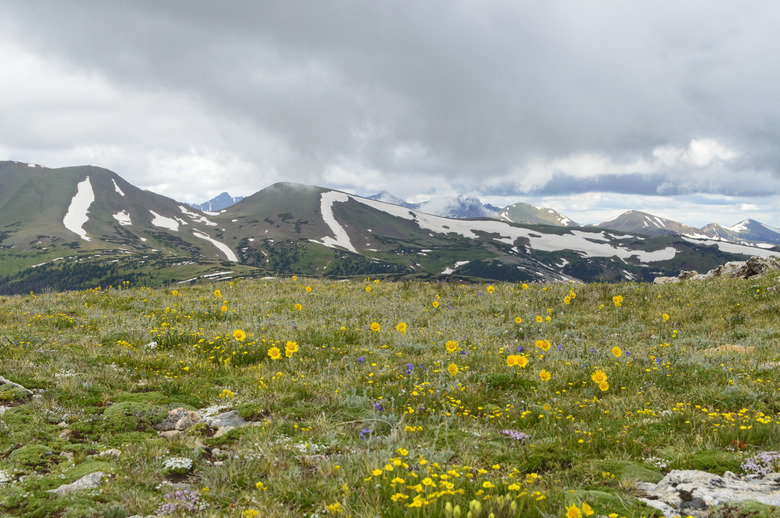What Are The Types Of Plants In The Tundra Biome?
Tundra ecosystems are full of extremes. Summer temperatures range from 37 to 60 degrees Fahrenheit (3 to 16 degrees Celsius), though the average annual temperature is -18F (-28C). Winds can sweep across the landscape at 60 miles (97 kilometers) per hour. These factors combined with the short growing season (usually around 50 to 60 days) means that life in a tundra climate is harsh and challenging.
Luckily, plant adaptations mean that the species found in the tundra are well-suited for this constantly changing environment. There are more than 1,700 species of tundra plants. Some plants even look similar to others that you may know around the world.
Mosses
Mosses
Mosses are small, non-vascular, spore-bearing plants that aid in soil breakdown and nutrient release to surrounding plants. In the tundra, moss acts as an insulating top layer, protecting the permafrost (permanently frozen soil) below from warm air that could lead to thawing.
The composition of plant life in the tundra is often dependent on soil drainage. Tundra mosses are most often found in large areas of low relief, where boggy peat-soils are found and water is held near the surface of the earth. Mosses are able to lie dormant for months, or even years, soaking up moisture like a sponge when it becomes available again.
Grasses
Grasses
Grasses are found throughout the tundra on elevated sites, in dry gravel bars along rivers and in flat, boggy areas.
Grasses can be easily confused with a similar plant known as a sedge. The stem of a grass is round, while the stem of a sedge has a cross-sectional shape of a triangle. An easy way to tell the difference in the field is to remember the phrase "sedges have edges."
Flowers
Flowers
Flowering tundra plants are often small, rising only a few inches off of the ground. Many are known as "cushion plants" because they grow in dense mats to shelter themselves from cold temperatures and wind. Though they are small, relative to the rest of the plant, the flowers are large and colorful. More than 400 types of flowers can be found in the tundra.
Berries are a group of flowering plants. The berry, or fruit, develops after the flower has bloomed and been successfully pollinated. Bearberries, bunchberries, cloudberries, bog cranberries, crowberries and blueberries can all be found in the tundra. In the fall, when berries are abundant, they provide food for birds, small mammals and even grizzly bears, making them an important source of energy in the tundra.
Shrubs
Shrubs
Shrubs are often found lower in elevation, closer to treeline than the higher alpine tundra slopes. Many species of shrubs are similar to tree species from warmer areas of the world. They exist in the colder tundra environment as shrubs, which means they need fewer nutrients to survive and are lower to the ground to shelter from strong winds. Dwarf birch, balsam poplar and willows are a few examples.
Tundra Plant Adaptations
Tundra Plant Adaptations
Many plants are perennials, which means they save up their energy and nutrients for multiple growing seasons before flowering.
Willows have hair around their flowers that is able to raise the temperature near the flower to 5F to 15F higher than the air temperature. Labrador tea keeps its leaves at the end of the summer instead of dropping them to the ground, which helps it stay protected from the wind. Arctic poppy and Arctic dryad are able to rotate the head of its flower to follow the sun throughout the day, giving the plants extra warmth and energy.
Plants in the tundra have evolved over time to survive a cold winter, short growing season and strong winds. Though the tundra may look barren at first glance, it is full of a vibrant community of plants, many of which have survived here for thousands of years.
Cite This Article
MLA
Taylor, Lindsey. "What Are The Types Of Plants In The Tundra Biome?" sciencing.com, https://www.sciencing.com/types-plants-tundra-biome-8488463/. 22 November 2019.
APA
Taylor, Lindsey. (2019, November 22). What Are The Types Of Plants In The Tundra Biome?. sciencing.com. Retrieved from https://www.sciencing.com/types-plants-tundra-biome-8488463/
Chicago
Taylor, Lindsey. What Are The Types Of Plants In The Tundra Biome? last modified August 30, 2022. https://www.sciencing.com/types-plants-tundra-biome-8488463/
